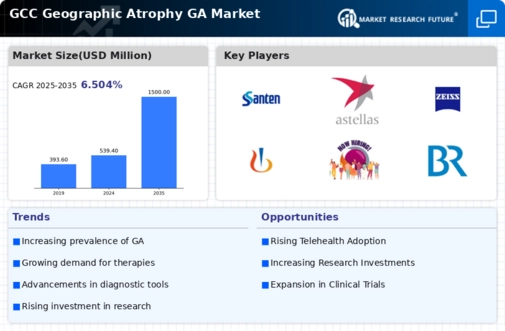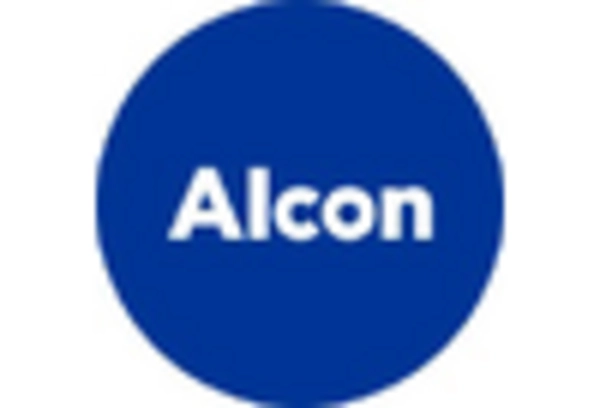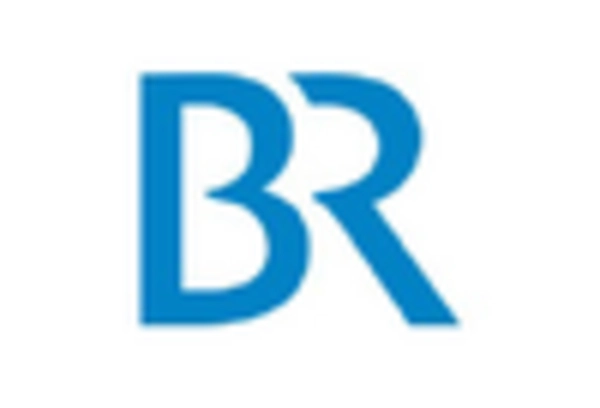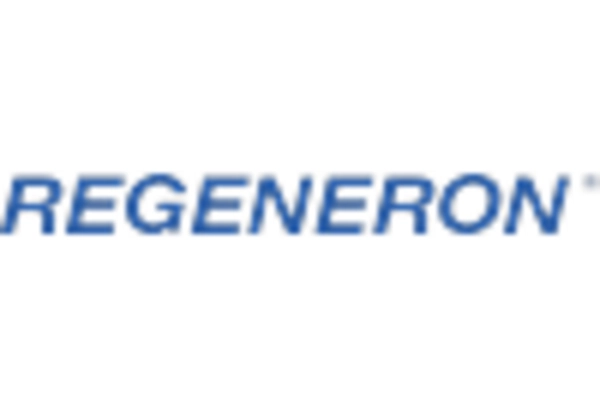Increasing Aging Population
The demographic shift towards an older population in the GCC region appears to be a primary driver for the geographic atrophy-ga market. As individuals age, the risk of developing age-related macular degeneration (AMD) increases, leading to a higher incidence of geographic atrophy. Current estimates suggest that by 2030, the population aged 60 and above in the GCC will reach approximately 20% of the total population. This demographic trend indicates a growing patient base, which could potentially enhance the demand for diagnostic and therapeutic options within the geographic atrophy-ga market. Furthermore, healthcare systems may need to adapt to accommodate the increasing number of patients, thereby influencing market dynamics and driving innovation in treatment solutions.
Advancements in Diagnostic Technologies
Technological innovations in diagnostic tools are likely to play a crucial role in shaping the geographic atrophy-ga market. Enhanced imaging techniques, such as optical coherence tomography (OCT) and fundus autofluorescence, provide more accurate assessments of retinal health, facilitating earlier detection of geographic atrophy. The GCC region has seen a rise in the adoption of these advanced technologies, which may lead to improved patient outcomes and increased treatment rates. As diagnostic capabilities expand, healthcare providers are better equipped to identify at-risk populations, potentially increasing the market size. The integration of artificial intelligence in diagnostics could further streamline processes, making it easier for practitioners to diagnose and manage geographic atrophy effectively.
Investment in Healthcare Infrastructure
The GCC region is witnessing substantial investments in healthcare infrastructure, which may positively influence the geographic atrophy-ga market. Governments are prioritizing healthcare development, leading to the establishment of advanced medical facilities and specialized clinics. This investment is likely to enhance access to care for patients suffering from geographic atrophy, facilitating timely diagnosis and treatment. Furthermore, improved healthcare infrastructure may attract international pharmaceutical companies to the region, fostering competition and innovation in the geographic atrophy-ga market. As a result, patients may benefit from a wider array of treatment options, potentially improving overall health outcomes and driving market growth.
Growing Awareness and Education Initiatives
There is a noticeable increase in awareness and education initiatives regarding eye health in the GCC, which may significantly impact the geographic atrophy-ga market. Campaigns aimed at educating the public about the risks associated with AMD and geographic atrophy are becoming more prevalent. These initiatives, often supported by healthcare organizations and government bodies, could lead to earlier diagnosis and treatment, thereby expanding the market. For instance, educational programs that inform individuals about the importance of regular eye examinations may result in a higher number of patients seeking care. This heightened awareness could potentially translate into increased demand for therapeutic interventions, thereby driving growth in the geographic atrophy-ga market.
Regulatory Support for Innovative Therapies
Regulatory bodies in the GCC are increasingly supportive of innovative therapies for eye diseases, which could have a profound impact on the geographic atrophy-ga market. Streamlined approval processes for new treatments may encourage pharmaceutical companies to invest in research and development. This regulatory environment appears conducive to the introduction of novel therapies that target geographic atrophy, potentially expanding the treatment landscape. As new therapies gain approval, patients may have access to more effective options, which could enhance treatment adherence and improve quality of life. The proactive stance of regulatory agencies may thus serve as a catalyst for growth in the geographic atrophy-ga market.

















Leave a Comment